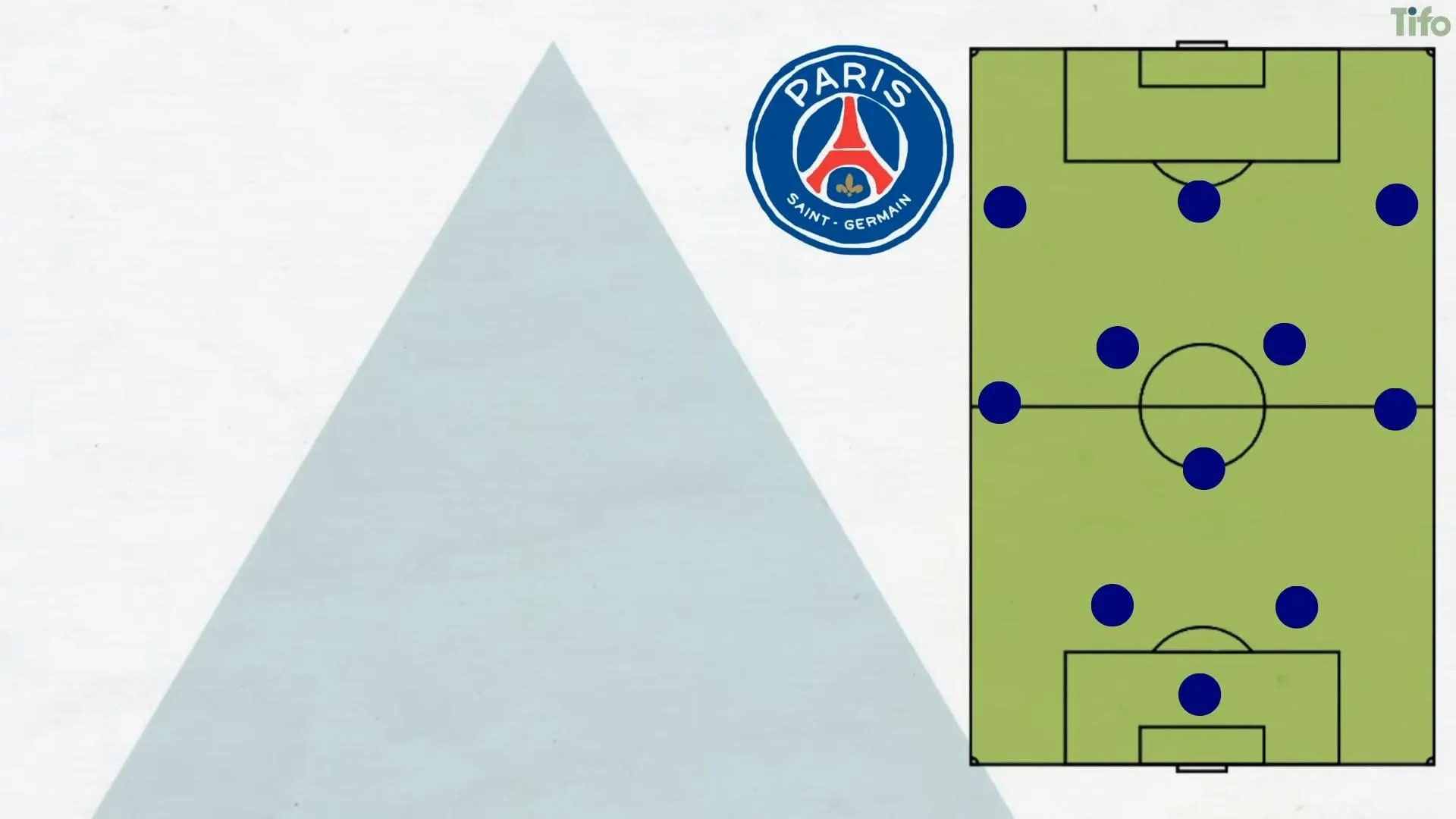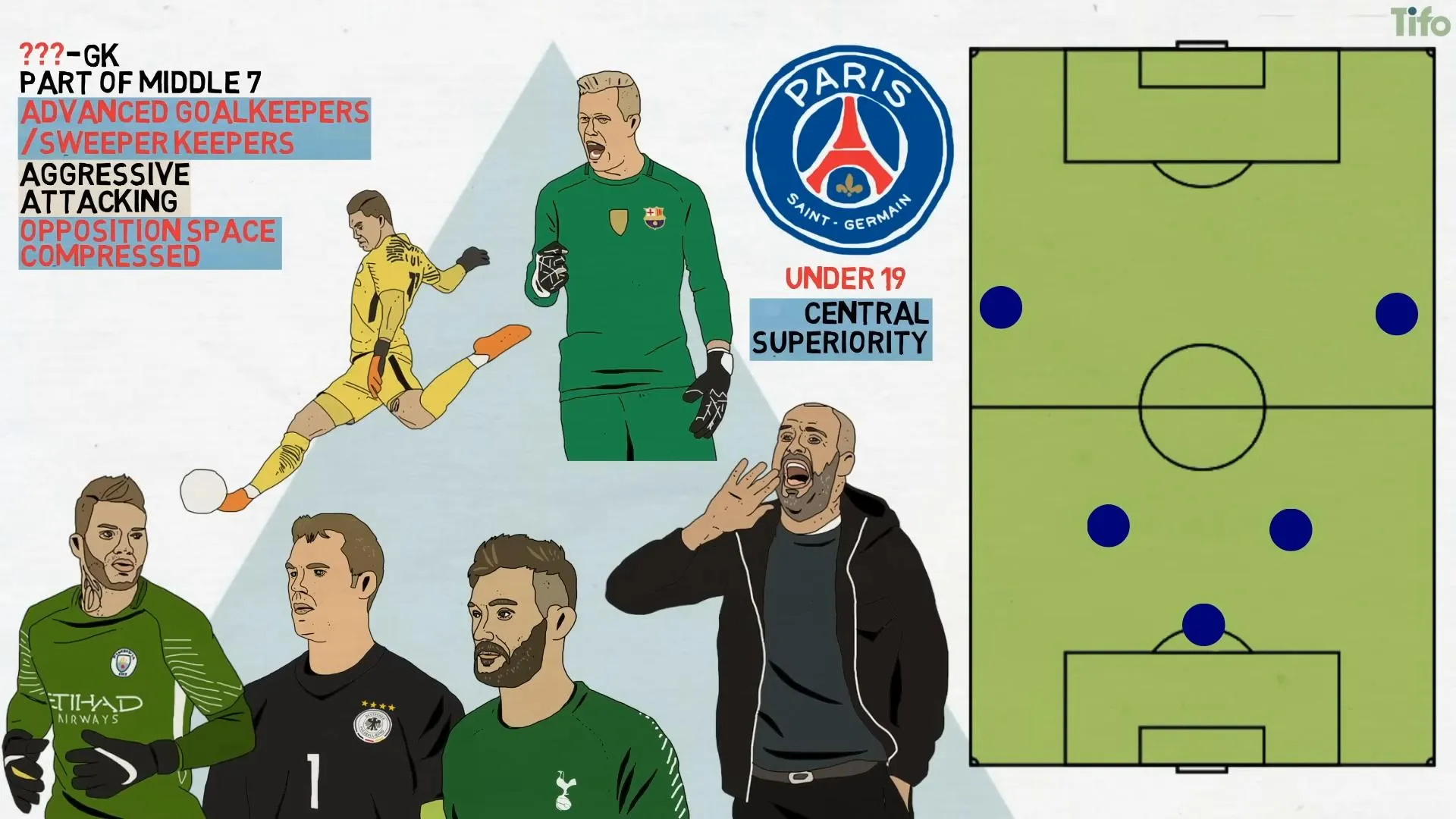Understanding the Thiago Motta Formation: The 2-7-2 Tactic
The Thiago Motta formation has emerged as a revolutionary strategy in contemporary football, particularly showcased by Motta’s management of the PSG under-19 squad. But what exactly is this formation, and how does it function on the pitch? This formation consists of two defenders, seven midfielders, and two forwards, emphasizing a possession-based style of play that champions high pressure and quick transitions. Motta’s vision is clear: he aims for a compact team that controls the game, allowing players to constantly find solutions and maintain fluid movement with and without the ball.
Why does this formation matter? It signifies a shift in how coaches are approaching the game, focusing on versatility, player movement, and the role of the goalkeeper in building attacks. Through this article, we will delve deeper into the specifics of the 2-7-2 formation, its tactical advantages, and how it reflects a broader trend in football strategies.
Key Takeaways on the Thiago Motta Formation
- The goalkeeper plays a crucial role, acting as a central figure in midfield.
- The formation facilitates high pressing and quick transitions.
- Player movement and positional fluidity are vital for success.
- Teams using this formation can create numerical superiority in critical areas.
The Structure of the Thiago Motta Formation
The Thiago Motta formation is intriguing not just for its layout but for its tactical philosophy. In a typical 2-7-2 setup, there are two center-backs who provide defensive stability while the midfield comprises seven players who can interchange roles. This includes a defensive midfielder who often drops deep between the center-backs to facilitate ball distribution and maintain possession.
The two forwards are expected to press high, embodying the philosophy that the attacker is the first line of defense. This dual role enhances the team’s ability to recover possession quickly and transition into attack.
The Role of the Goalkeeper in a 2-7-2 Formation
One of Motta’s revolutionary ideas is positioning the goalkeeper as an integral part of the midfield. By citing the goalkeeper as part of the seven midfielders, he emphasizes the need for a keeper who can distribute the ball effectively and participate in build-up play.
This approach mirrors trends seen in modern football, where goalkeepers like Manuel Neuer and Ederson are not just shot-stoppers but playmakers. They are expected to break opposition lines with precise passes, thus reshaping traditional views on the role of the goalkeeper.
Impact on Team Dynamics
With this tactical setup, players are encouraged to be versatile and adaptable, which fosters a dynamic playing style. For instance, the full-backs push wide to stretch the opposition, allowing midfielders to exploit the space created. This leads to effective passing triangles that are essential for maintaining possession and creating goal-scoring opportunities.

Analyzing the Effectiveness of the Thiago Motta Formation
The effectiveness of the Thiago Motta formation becomes evident when observing its implementation in matches. Teams employing this tactic often dominate possession and create numerous chances, disrupting the opponent’s defensive structure. For example, during UEFA Youth League matches, PSG under-19 demonstrated how a compact midfield can control the game and create overloads.
Moreover, this formation allows for strategic flexibility. Teams can easily shift between defensive and offensive stances, making it challenging for opponents to predict their movements. The flexibility in player roles ensures that the team can adapt to various match situations, further enhancing their competitive edge.
Lessons from Pep Guardiola’s Influence
Thiago Motta’s tactical approach seems heavily influenced by Pep Guardiola’s principles of positional play. Guardiola’s teams are renowned for their fluidity and possession-based style, and Motta has embraced these concepts in his formation. The emphasis on creating superior numbers in midfield and maintaining positional discipline reflects a broader trend in modern football.
Combining Tactical Awareness with Player Skill
The integration of tactical awareness with individual player skills is crucial for the success of the 2-7-2 formation. Players must be capable of reading the game, knowing when to press, and when to drop back into defensive positions. This high level of understanding among players is what sets successful teams apart.

Future Implications of the Thiago Motta Formation
As football continues to evolve, the Thiago Motta formation could play a pivotal role in shaping future tactics. Teams are increasingly recognizing the importance of possession and movement, and formations like the 2-7-2 could become more prevalent at higher levels of the game.
With the ability to control matches and create numerical advantages, this formation not only enhances a team’s ability to score but also minimizes the risk of conceding. Coaches and players alike are likely to continue exploring the depths of this approach, learning from its successes and challenges.
Conclusion: Embracing Innovation in Football Tactics
The conversation surrounding the Thiago Motta formation highlights the need for innovation in football tactics. By redefining the roles of players, especially that of the goalkeeper, Motta’s 2-7-2 formation presents a forward-thinking strategy that emphasizes control, movement, and adaptability. As coaches and players continue to embrace such approaches, the landscape of football may transform, leading to exciting new developments on the pitch.
To further explore the tactical intricacies of Thiago Motta’s formation and its impact on modern football, you can check out articles on [Coaches Voice](https://www.coachesvoice.com/cv/thiago-mottas-tactics-and-style-of-play/) and [Give Me Sport](https://www.givemesport.com/thiago-mottas-2-7-2-formation-explained/).
